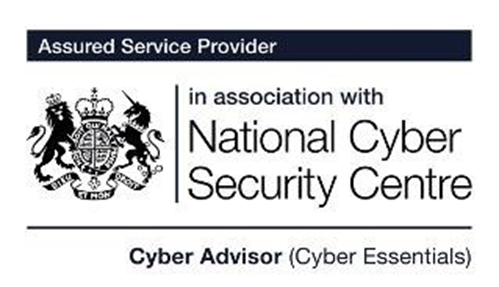Ensuring your business’s IT infrastructure is always running optimally is immensely important. Downtime will have a reverberating effect on the customer journey of your clients (among other negative effects), translating into lost deals and a lousy reputation that ultimately leads to diminished profits. If you are a small to medium-sized business, this may be a loss that you cannot afford to take.
There is never a one-size-fits-all solution to every business problem. When choosing an onsite or remote IT support provider for all your digital information needs, you need to assess many particulars about your unique organisation. And the size of your company isn’t necessarily the most important consideration.
An onsite IT support provider refers to a dedicated team you’ve hired to work from your company’s physical location to fix and upgrade all things associated with its information technology infrastructure. Remote support is the third party your business has contracted with that provides IT managed services with software from anywhere in the world.
Your remote managed service provider also typically provides IT consultancy whenever you have questions about your information technology infrastructure. However, IT services consultancy is really an integral part of what both onsite and remote IT support providers provide.
You’re not limited to just simply choosing onsite or remote IT consultancy and services. For some businesses, doing a hybrid version of the two makes more sense, with both onsite and remote IT managed services. You can also outsource your on-site or remote IT services consultancy and services or have either done by an in-house team.
As has been said, the right choice depends on a mix of internal and external factors about your company that only you can effectively evaluate. However, this blog article aims to help you by explaining a little more about the pros and cons of each. There will also be some likely scenarios mixed in that will give you a fuller picture of where the best value can be found.
Onsite IT Support
It’s probably best to start with the pros and cons of onsite IT consultancy and support. A dedicated staff of professional IT support providers sounds like the obvious choice many businesses would want to go with, and there are good reasons. The first is that downtime to your company’s IT infrastructure should be minimised – your IT support is onsite and on hand to fix any issues immediately, after all. And there are other benefits.
Pro: Efficiency
With the ever-increasing technological disruptions, adding efficiencies anywhere in your organisation will be a serious plus. Onsite IT support is essential to businesses experiencing growth, as rollouts, upgrades, and upkeep of critical hardware must be done. Everything involved with setting up new offices – from installing cables and new computers to proficient change solutions – becomes much more efficient with an on-site IT support provider.
Pro: Quick Problem Resolution
Speed of service cannot be stressed enough as the primary benefit for on-site IT. Any technical issues or downtime can have severe consequences if your business is especially tech-forward and reliant on information technology. Any technical problems or downtime can have serious consequences. The consequences are aggrandised when yours is a small to medium-sized business. Hardware is not commonly the source of downtime, but when it is, having a remote IT support provider will cause even more delays in fixing them.
Pro: Alignment
By “alignment”, your on-site IT support provider or team knows your systems and infrastructure inside out. This is typically more true when you have a dedicated in-house IT consultancy and service team whose sole mission is to improve the functionality and effectiveness of your business compared to on-site IT managed services from a third party.
An on-site IT support provider aligned only with your business’s mission is also kept aware of any issues that are likely to arise as they arise. On-site alignment also adds further efficiency by streamlining IT consultancy and services processes.
Con: Cost
The cost is probably the biggest con to having a dedicated staff of in-house and on-site IT support. There is a hefty price to pay for efficiency, alignment, and quick problem resolution, which may be more than a small to medium-sized business can stomach. Your on-site IT consultancy and support team may be salaried and receive common benefits among all your employees.
Con: Not Always Fast Or Efficient At Software Problems
Any issues with your business’s hardware will almost always be fixed faster by an on-site IT support provider. However, this is not always the case for software or complex problems. And if your on-site team are hourly employees, you may have to wait longer if the problem happens when they are off the clock.
Remote IT Support
An option that many small to medium-sized businesses find value in is choosing remote IT support. Remote support is typically done through a third-party IT support provider that performs a mix of IT consultancy and full IT managed services.
One of the great things about some of these remote IT support providers is that they also offer on-site support – giving your business a lot more flexibility and benefits. Optimising IT is one IT support provider that provides both remote and on-site support. Take a look at some of the potential pros and cons that choosing remote IT managed services may have on your business:
Pro: Cost-Effective
For most small to medium-sized businesses, remote IT support is overwhelmingly more cost-effective than an in-house, on-site team. There are two primary reasons for this. First, remote providers are not employees, whether you use them primarily for IT services consultancy, on-off services, or full IT managed services. They are classified as contractors. You do not have to pay them a salary or the benefits packages you give your in-house employees. Second, one of the best parts about remote IT support is that you only pay for the services you want then to perform.
When you hire a third party for remote IT support, you will determine what you want them to do and put that into your service contract. You only pay for what you need and are not required to pay for what you don’t need. With on-site IT support, you generally pay hourly wages or a salary, assuming that these employees will be worth it in the long run.
But, for companies with only a limited number of issues arising with their information technology infrastructure and systems, it usually makes more sense to go with remote IT support. You wind up saving more in the long run, and that money can be used to innovate within your company to grow your business.
Pro: Faster Problem Resolution For Common IT issues
One of the pros of on-site IT support listed above was that there is faster problem resolution. This is true, but typically for hardware and non-complex issues. The truth is that third-party IT consultancy and support service providers often have much more training and resources than the typical small business in-house IT support team will.
Optimising IT, for instance, has over a hundred years of combined experience in this field and has invested heavily in the tools necessary to optimise your information technology infrastructure. And more often than not, the most common issues that arise in your business’s IT infrastructure are the kind that are more quickly resolved by remote service providers such as Optimising IT.
Pro: IT Support 24/7/365
Another benefit of remote IT services consultancy and support is that you get the services you pay for every hour of every day. When you choose a reputable company, this will be stipulated in your service agreement.
IT consultancy services and support 24/7/365 take enormous pressure off of small to medium-sized businesses. Your downtime is minimised, and you will have more flexibility in what you can offer to your customers.
Pro: Some Remote IT Support Providers Also Offer On-Site Services
Nearly 95% of issues with your IT infrastructure can be solved remotely. However, some remote IT support providers also offer on-site services. Optimising IT has some of the most well-trained and experienced engineers in the industry that can come to you when you need them. What we offer – that some other remote IT providers do as well – is on-demand site visits and more frequent check-ups.
You decide which best suits your needs. On-demand IT support can be worked into your service agreement, providing one of your expert engineers to come out when requested. Regular site visits cost a little more but allow an engineer to manage your hardware and systems better. This hybrid approach may maximise the cost-effectiveness and efficiency of your business.
Pro: Easier To Achieve Compliance With Data Regulations
This remote IT support pro applies to almost any company that collects, stores, and processes consumer data. But it explicitly talks about the General Data Protection Regulation practical from 2018. The legislation institutes standards on how businesses can collect data from EU citizens and what they are allowed to do with it.
The GDPR is comprehensive and challenging to understand. F fines for failing to uphold the GDPR’s standards can reach millions. Reputable remote IT consultant services and support provider that works with businesses in the EU will be able to bring you into full compliance, saving you the headache of doing it yourself and reducing your risks.
Con: You’re Not Their Only Client
One of the cons businesses first consider outsourcing remote IT support is that they have to wait in line for services. And this is true to some extent, primarily when you outsource to an IT services consultancy and support company that is strained with volume and lacks the resources to keep up. But this is not always the case.
If you choose a remote IT support company with a lot of talent and resources, you will hardly notice that you are one of the dozens of companies they work with. A reputable IT support provider will also be contractual with your company to provide the services you want when you want them.
Con: It’s Not Always Easy To Know What Services You Will Need
Small to medium-sized companies generally have little wiggle room to deviate from their budgets. This presents a problem when they choose remote IT support. Different issues and complexities arise at any given time. With a remote IT support provider, you can choose what services you want and only pay for those you get. However, you may require some benefits outside of your service agreement or need to remove some that you thought you would need and didn’t. It’s a good idea to designate some of your funds towards adding any services in the future that you don’t yet know you’ll need.
Summary
There isn’t a one-size-fits-all solution when it comes to IT support. On-site and remote IT support solutions come with their inherent pros and cons, but the weight of each entirely depends on your particular needs and IT infrastructure. However, most small businesses find more value in outsourcing their IT support remotely.
Remote IT support is much more cost-effective than an in-house, on-site IT support team. Most of the issues that arise can be solved faster by remote support. And some remote IT support service providers also offer on-site service – giving you all of the benefits of both types. Finally, remote IT support often has the more technical expertise and resources available to minimise your business’s downtime. This is crucial to improving the services you offer to customers and promoting your brand identity.
If you are still unsure which option best suits your business, you can always consult with us. Contact us to discuss your needs and how Optimising IT can provide solutions at Optimising IT.












